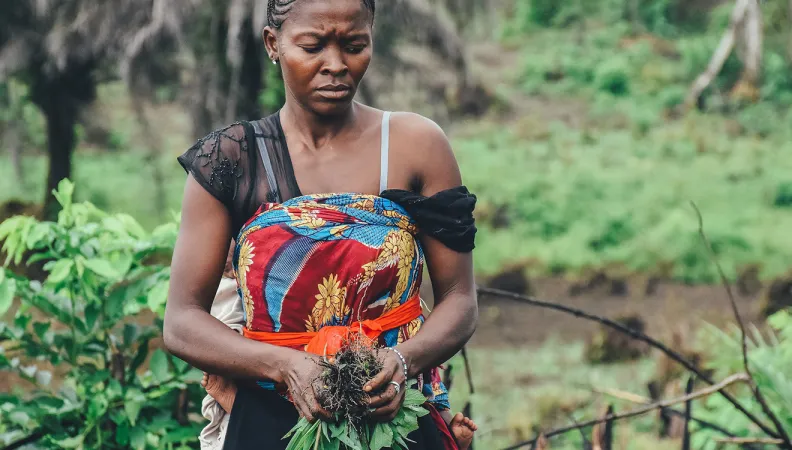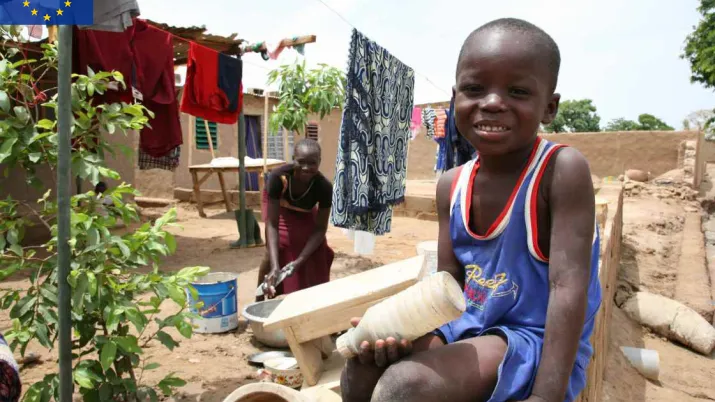 Gender, as a system of domination, contributes to structuring governance and resource allocation processes – an issue that is at the heart of the commons. This study focused on the links between the two concepts, in order to outline the conditions for an approach to the commons through the lens of gender.
Gender, as a system of domination, contributes to structuring governance and resource allocation processes – an issue that is at the heart of the commons. This study focused on the links between the two concepts, in order to outline the conditions for an approach to the commons through the lens of gender.
Context
For over a decade, the study of the commons and their promotion by social movements have considerably developed. The foundations were laid by Garrett Hardin in 1968 in his article "The Tragedy of the Commons": it stated that only the privatization or nationalisation of an open access common resource could make it possible to profit from it while ensuring its renewal. By demonstrating that other forms of governance and institutional arrangements based on communities of users were possible, Elinor Ostrom opened the way to possible links with other fields (ecology, the digital sector) and other issues (climate change, norms and social interactions).
Questioning the boundaries between private and public spheres, the definitions of ownership, the management and sharing of resources, and the role of communities and traditional knowledge, the discussion around the commons could not fail to address studies on gender as well as feminist views and practices. These have enriched the theoretical and programmatic approaches of the commons. Often critical, this contribution has however not led to a coherent conceptual articulation, nor to a real aggiornamento of the different approaches to the commons viewed through the prism of gender.
Goal
Starting from a systematic review of academic productions devoted to the commons in the fields of economics, sociology and political sciences (and from a human rights perspective in particular), this study aimed at defining the conditions for an approach to the commons through the prism of gender.
The aim was to apply a gender approach to the three components of commons (resource, community, rules), as well as to their major characteristics (collective action, ownership, distribution of value). This approach aimed to highlight how gender, as a system of domination, contributes to structuring governance and resource allocation processes.
It was also about considering how women’s and men’s rights to life are satisfied (or not), what are their practical needs (improvement of living conditions) and their respective interests in reducing gender inequality. In this regard, the study paid particular attention to the achievement of the Sustainable Development Goals (SDGs) related to commons and gender equality, and their possible contradictions. In this perspective, all care-related activities - which are extensively studied from a gender perspective - have been the subject of specific attention: close links were likely to be established between the social organization for care services (for children, sick persons, the elderly and/or dependants, etc.) and those governing the management of the commons, especially the environment.
Method
OFCE defined a methodology to select the corpus of documents for this state of the art and its critical analysis. The research questions were asked from different perspectives: the feminist economy, the history of the commons, eco-feminism and feminist perspectives on the commons.
OFCE then carried out two case studies to illustrate:
- the current limits of the articulation between gender and commons,
- the perspectives that a critical approach through the prism of gender could open about their definition and associated discourses (especially in the field of development policies).
For example, by looking at the subject from the "care" perspective (and its critique), these case studies are likely to cross-examine practices regarding the management of different commons: natural resources or digital resources, basic services to the community, etc.
Results
The research project resulted in three deliverables:
- A bibliometric study presenting the state of the art, the methodological choices made and the result of the analysis. This report outlines complementary research proposals and a series of recommendations that could feed strategic reflections underway at AFD.
- Two notes to illustrate more precisely the interest of a critical approach through the prism of gender for the (re)definition of commons: "Water, a "one of its kind" common?" and “Urban commons through the prism of gender”
Lessons learned
The literature combining gender and reflection on the commons is not new, but remains insufficiently explored. It is heterogeneous and is analysed here from two points of view: academic and analytical on the one hand; normative and committed on the other hand.
The commons are not free from forms of oppression. The research agenda remains open: more empirical work is required to understand the processes that recompose existing hierarchies within the commons, as well as the modes of resistance from oppressed groups.
The bibliometric study paves the way for an analysis of the grey literature produced by development agencies and donors to understand how the practices of these actors are influenced by the connections between academic literature on gender and academic literature on the commons. With this in mind, the proposed reading grid could be adapted to identify discursive and normative frameworks for action (policy frames).
Without claiming to be exhaustive, this study demonstrates the extraordinary richness of an approach combining gender and commons to address the major transitions of our time (environmental, demographic, digital).
In order to outline a transformative approach to gender and commons, two case studies complete the bibliometric study: one is dedicated to urban commons and the other to environmental commons from a climate change perspective.
Contacts:
- Hélène Périvier, economist, OFCE
- Maxime Forest, political scientist, OFCE
- Stéphanie Leyronas, research officer, AFD
- Serge Rabier, research officer, AFD
 This project aims to strengthen skills and synergies in a regional centre of expertise in international development, located in the city of Clermont-Ferrand (France), and its international outreach. This involves funding training activities and research capacity building for stakeholders from the Global South (executives, young researchers, etc.), as well as research activities on development.
This project aims to strengthen skills and synergies in a regional centre of expertise in international development, located in the city of Clermont-Ferrand (France), and its international outreach. This involves funding training activities and research capacity building for stakeholders from the Global South (executives, young researchers, etc.), as well as research activities on development.
Context
Clermont-Ferrand is a hub of expertise in development economics recognized at the French and international level, thanks to the research activities of the Foundation for Studies and Research on International Development (FERDI). Training courses aimed at executives and future decision-makers in the countries in the Global South, provided in particular by the Centre for International Development Studies and Research (CERDI) since 1976, also contribute to this recognition.
The presence of a branch of the Global Development Network (GDN) will now strengthen this hub. This international organization's mission is to strengthen research capacities in Global South countries wishing to benefit from the city's dynamic context.
Through AFD, the French State supports the research and training activities of the Clermont International Development Hub and the establishment of the Clermont-Ferrand branch of GDN within the framework of a single project. This project aims to strengthen the ecosystem of local expertise and to develop synergies between the actors concerned for the benefit of their partners in the Global South.
Goal
This project has three complementary objectives:
- Support for the creation in Clermont-Ferrand of a branch office of the GDN, to enable the network to continue from France its flagship activities (such as its annual conference and the Global Dev blog), as well as to launch an ambitious programme to simultaneously fund research production and capacity building of African research institutions;
- Support for FERDI’s research activities, to enable the foundation to gain visibility and influence on sustainable development issues;
- Strengthening of FERDI’s training activities in partnership with the University of Clermont-Auvergne, including the Master’s degree in “Project Management for Development” (MODEV), which specifically targets executives in countries in the Global South, and setting up additional training activities (development of short and/or distance courses, support for doctoral courses in the South).
Results
The expected impacts of the project are:
- For the actors of the Clermont Hub: strengthening the influence and outreach of the Clermont pole and its actors, allowing them to become a reference on development issues in national and international debates.
- For the partners of the Clermont hub in the Global South, and in particular in French-speaking Africa:
• Improving the skills of managers who receive training (women and men) in the management of development policies and projects;
• Strengthening the research capacities of researchers and partner institutions in the Global South on sustainable development issues, as well as their capacity to participate in public debate;
• Development and/or consolidation of networks of researchers and learners in beneficiary countries;
• Improved public policy dialogue, so that development policy-making in AFD’s partner countries can benefit from the insights of locally based research.



